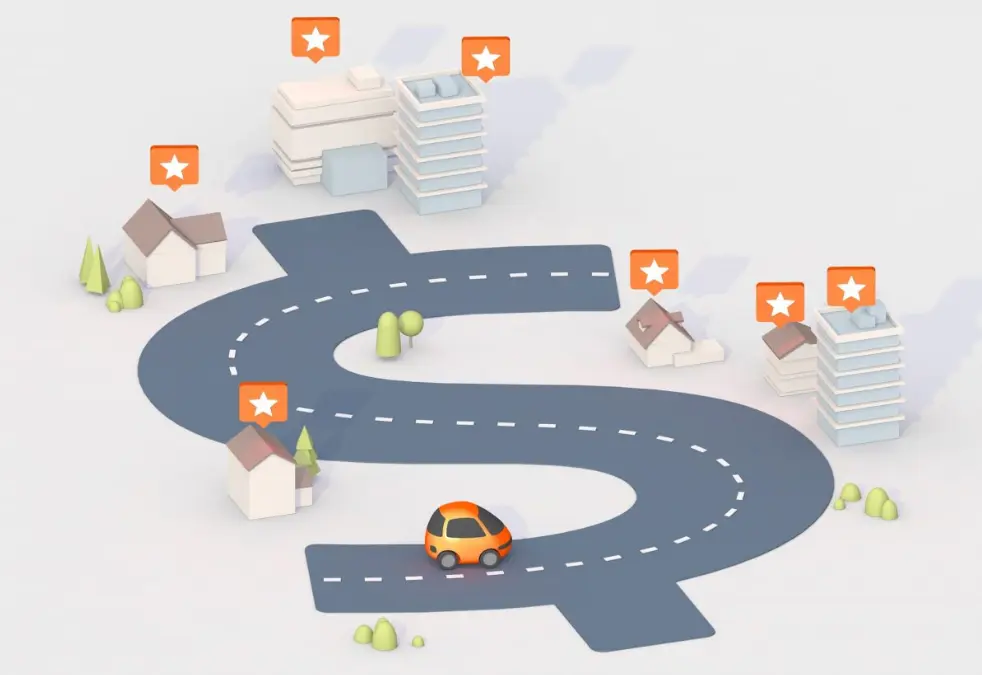A short guide to Sales Routing
What is Sales Routing?
Sales routing is a strategic approach to directing and optimizing your sales efforts. It involves the systematic assignment of leads, territories, and routes to ensure that your sales team is operating at peak efficiency. By using advanced technology and data-driven insights, sales routing enables businesses to;
- identify the most lucrative opportunities
- allocate resources effectively.
- eliminate inefficiencies
- maximize revenue generation
- assigning sales representatives based on their expertise and proximity to prospects
Sales routing, at its essence, is about optimizing the sales journey for both businesses and customers. It's like creating a GPS navigation system for sales teams, guiding them efficiently from lead to close.
By harnessing customer data and geographical insights, sales routing identifies the most promising opportunities and assigns the most suitable sales reps to pursue them.
This not only boosts productivity but also enhances the customer experience by ensuring that interactions are tailored and timely. It's all about aligning resources effectively to drive revenue and build lasting relationships.

How should my route be designed and optimized?
The first step in creating your sales route is selecting the right technology for the job. Basic route planning to go from point A to point B can be done manually using Google spreadsheets and maps, however this method is restricted to publicly available data points.
There is an improved method. Let's see how intelligent route planning software can help you improve your path:
Software for mapping sales routes onboard
- The best sales route planning software automatically calculates your routes based on priorities you specify, such as account value, likely to close, or other factors, and connects smoothly with your sales data. It incorporates consumer information and sales targets with intricate timetables, numerous stops, and stringent
Locate your clients on a map
- Start mapping out high-priority accounts after the appropriate technology has been onboarded. You can identify trends such as customer clusters, rival hotspots, and undeveloped areas after you have a complete picture of the locations of all your customers, prospects, and competitors' accounts. It can indicate clients who are in need of renovations and point out where fresh opportunities may be found.
Prioritize and plan for your finest opportunities
- In an ideal world, you could close deals with every potential customer. However, you are running out of time, so you must prioritize pursuing your finest prospects. You may use Sales AI's AI-driven insights to prioritize your most important deals according to the standards you specify (such as deal size or level of engagement).
Plan for new routes and be prepared for scheduling modifications
- You know what your top priorities are, but before you leave, make sure your calendar allows for some flexibility. For the purpose of making the most of your field time, you could simply adjust to unforeseen cancellations or other adjustments. Intelligent routing software can adapt, for instance, if a client has to postpone an appointment that they originally scheduled for the morning.
- In a similar vein, a representative might swiftly rearrange their schedule for the remainder of the day to make room for additional time if they determine that spending a little more time with a specific customer will probably result in a significant opportunity.
After doing the rounds, enter notes in your CRM
- After every interaction with a client or potential customer, enter field notes into your CRM. You'll save time and guarantee that all of your sales team's records are maintained up to date by doing this. It also assists you in spotting patterns and trends that will guide future travel plans.
Benefits of Using Sales Routing Software
Field teams may easily solve obstacles by using intelligent route planning software, which helps them recognize, comprehend, and take advantage of their most important chances.
Adaptability:
- To handle complicated route planning, intelligent route planning software assists managers and representatives in creating intelligent visit plans. It takes into consideration several stops, set times for appointments and meetings, periods of high traffic, and even delays caused by inclement weather.
- Simultaneously, it schedules the best routes to prevent schedule gaps, minimizes unscheduled downtime, and helps representatives swiftly adjust to changing driving circumstances.
Increased Productivity:
- Powerful route planning software unlocks productivity and revenue and helps reduce transportation costs. When reps have a complete understanding of territories and market dynamics, they can focus on finding high-value territory opportunities and targeting ongoing marketing campaigns – at scale. It also handles calls and notes so agents can focus for sale.
Customization:
- With data updated in real time, everyone from the C-suite to the executive can see sales results and quickly adjust strategies to fit the moment.
Get started with sales route planning
The right way to plan your sales pipeline ensures that your field sales teams are working as efficiently as possible and doing what they do best.
- Gather and analyze data on your existing customers, including their location, purchase history, preferences, and buying patterns.
- Invest in sales route planning software or mobile apps designed to optimize field sales operations.
- Prioritize your sales calls based on factors such as customer importance, sales potential, and likelihood of closing deals.
- Monitor the performance of your sales routes regularly and gather feedback from your field sales teams.
➥ By following these steps and adopting a strategic approach to sales route planning, you can ensure that your field sales teams are working as efficiently as possible and focusing their efforts where they will have the greatest impact on driving sales and customer satisfaction.
- Why Is Online Scheduling Important for Businesses and Customers?
Why Is Online Scheduling Important for Businesses and Customers?